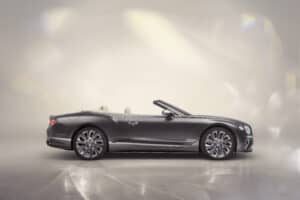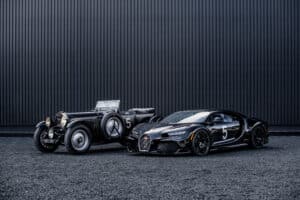Brabham sharing a light moment with Eddie Sachs prior to the 1961 Indianapolis 500.
Photo courtesy of jackbrabham.com
News that Sir John Arthur Brabham is to receive a state funeral has been met with respectful approval from the F1 racing world, as they mourn the death of the Australian supremo and 3 times Formula 1 Champion, who died at the age of 88 in his Queensland home earlier this week.
If you were to mention the name “Jack Brabham” to F1 enthusiasts of a certain age, a wistful look would come over them, as they smiling remember a time before on-board computers, or pit crews with radios. When drivers set off behind the wheel without fire retardant suits, in cars whose wheels still had tread on them. A time before multi-million pound sponsorship deals, even before colour TV.
This was a golden age of racing, when a pioneering group of exceptionally skilled drivers became responsible for transforming motor racing from a passionate hobby between competing auto-manufacturers into the thrilling Formula 1 event we know today. Their bravery, skill and passion is the stuff of legends, and Jack Brabham was one such hero.
The word “legend” is so over used in reference to people who are really rather good at something or other, that it has almost lost its true meaning, however in the case of “Black Jack” as he was often referred, the accolade of “legend” is richly deserved.
Born John Arthur Brabham, in Australia in April 1926, Jack’s early life was a humble one. His Grandfather emigrated from London to Hurstville, south of Sydney at the turn of the last century, where he opened a greengrocers shop. It was a family business where Jack’s father, and many other family members worked, but it was not for Jack! When he left school at 15, rather than working in the family shop, he went to work in a local garage instead.

The Brabham-BRM BT8 at the Easter Monday Goodwood race, 1964.
Photo courtesy of jackbrabham.com
By the start of WWII, he had joined the Royal Australian Air Force as a flight engineer, thereby unwittingly launching a career and life-long passion in the mechanics of speed. On his 20th birthday, Brabham was discharged from the RAAF, and his pedigree as an engineer and racing driver takes off.
He built up his own automotive workshop on a plot of land behind his grandfather’s house repairing and building Midget Speedcars. Initially Brabham believed that the drivers “were all lunatics” however, by 1947 he had decided to try his luck on the track, winning the third race he entered with ease. His skill on the Australian and New Zealand dirt ovals filled his book cases with trophies, winning the 1948 Australian Speedcar Championship, the 1949 Australian and South Australian Speedcar championships, and the 1950–1951 Australian championship.
In 1953,Brabham turned his attention to road track racing, when he bought his first modified Cooper racing car. This naturally skilled and determined driver began collecting more victories on the Australia and New Zealand circuits.
Brabham arrived in England in the mid-1954, where he bought another Cooper car and began racing on the European circuits. During his first year in England, Brabham developed a friendship with the Copper Brothers, who, after much persuasion by the then 29 year old, allowed him to race for them. In 1955 he raced first Grand Prix series, during that year he won 7 races and two world championships. This achievement made his rivals sit up and pay attention. Jack Brabham was becoming a household name in the world of F1 racing.
In 1959 Brabham won the F1 Championship for the first time. In 1960 he repeated this stunning success streak.
Yet Brabham was still an engineer at heart. He felt that his view of the technological advances in engine design, which had been so appreciated earlier, were beginning to fall of deaf ears. So, in 1960 Brahbam began his own car company with his friend Ron Tauranac producing Formula Junior cars, with the first car appearing on the tracks in 1961, although he continued to race the F1 circuit for Coopers till 1962.

Brabham in Racing Kit 1966
Photo courtesy of jackbrabham.com
By the age of 39, in 1965 Brabham’s cars had become a familiar presences on the F1 circuit, however, Brabham himself was driving less and less. In 1966, he had a change of heart, having designed a car he was truly proud of, he decided to drive it himself, becoming the first and only man ever to win the F1 series in his own car.
Brabham continued to race until 1970, winning his last Grand Prix victory in South Africa, before retiring at the age of 44, when Jack moved back to Australia with his family.
He sold his company to Bernie Ecclestone, who maintained the Brabham name and his innovative engineering approach, attracting drivers such as Graham Hill, Niki Lauda, Nelson Piquet, Damon Hill, and Martin Brundle, even Jack Brabham’s youngest son, David raced in the 1970s for the Brabham Team.
In 1978 Jack Brabham became the first racing driver to be knighted for his Services to Motor Sports, becoming Sir John Arthur Brabham. This was also the year in which Brabham raced the great Argentinean, Juan Manuel Fangio for the last time.
Billed as a demonstration race of classic F1 cars, both man made their intentions clear, they were there to race. The 5 lap “demonstration” turned into a nail biting display, with each driver taking turns to gain the lead. In the end Brabham just squeezed past on the finish line to win the race, although there was not associated silverware this time.
Over his 15 year F1 racing career, Brabham notched up 31 podium places, 14 outright wins and 3 series championships.
The words of his son, David, match the sentiment of the Australian people and the F1 community perfectly when he said “ He lived an incredible life, achieving more than anyone would ever dream of and he will continue to live on through the astounding legacy he leaves behind.”
Throughout his life, it was a matter of national pride that Brabham’s V8 modified engines came from Repco in Melbourne Australia, and became known as the Repco Brabham engine. Therefore it is only fitting that such a symbol of the Australian sporting achievement should be honoured by a state funeral.
The Queensland government and the family of the triple world F1 champion have announced the special ceremony will be held at 1.30pm on Wednesday, June 11, at the Southport Church of Christ on the Gold Coast, in his home state of Queensland.






